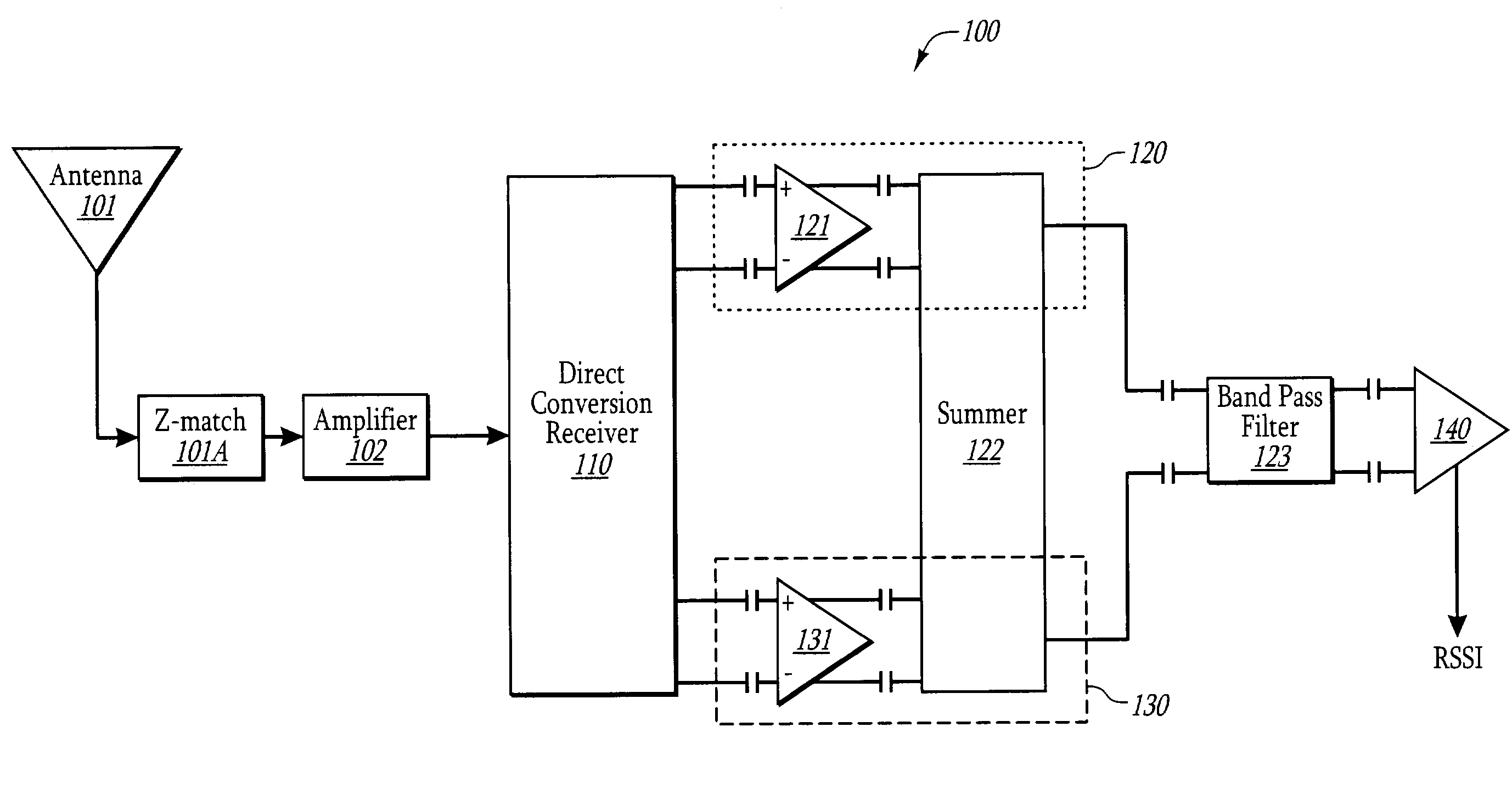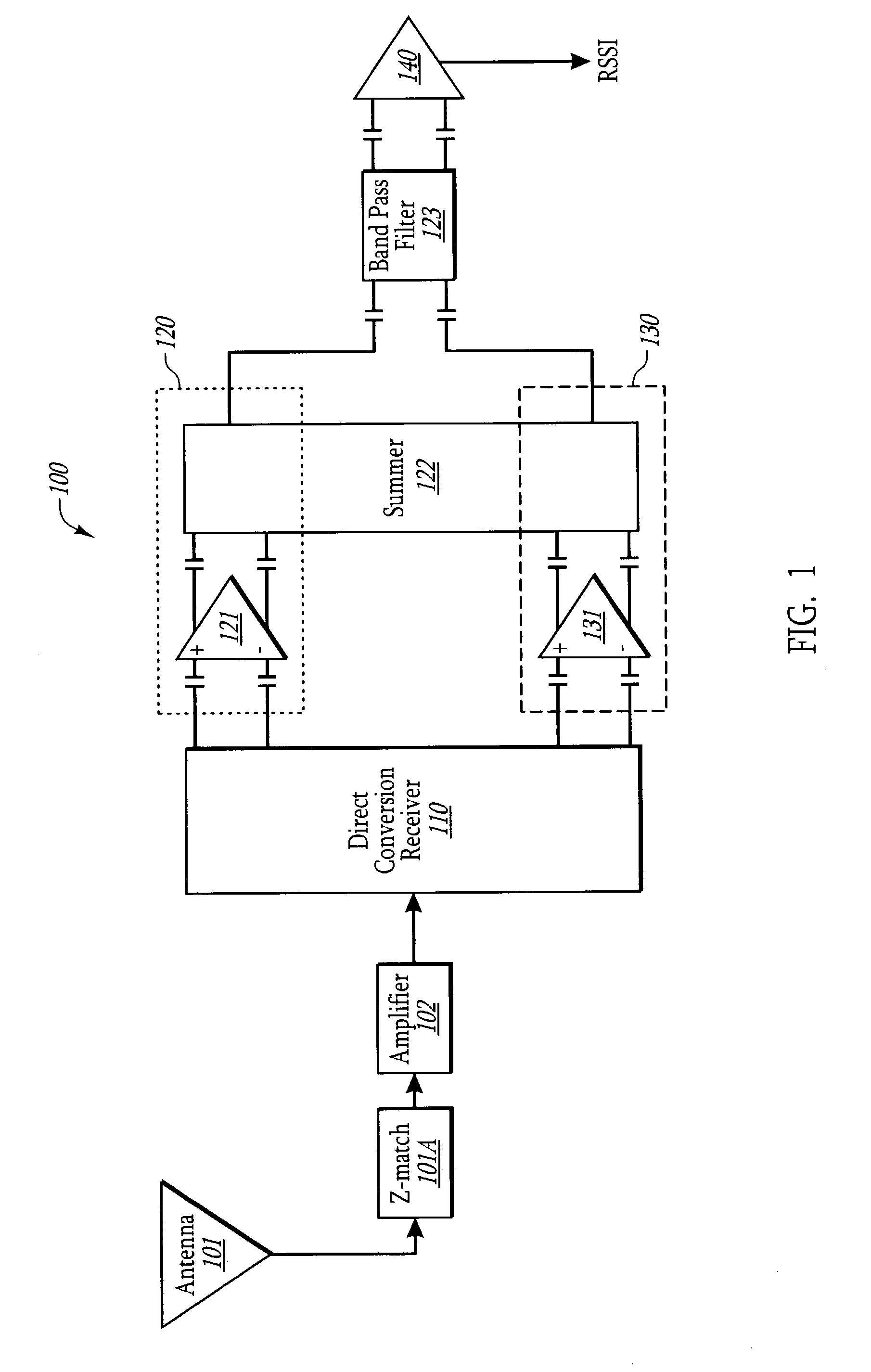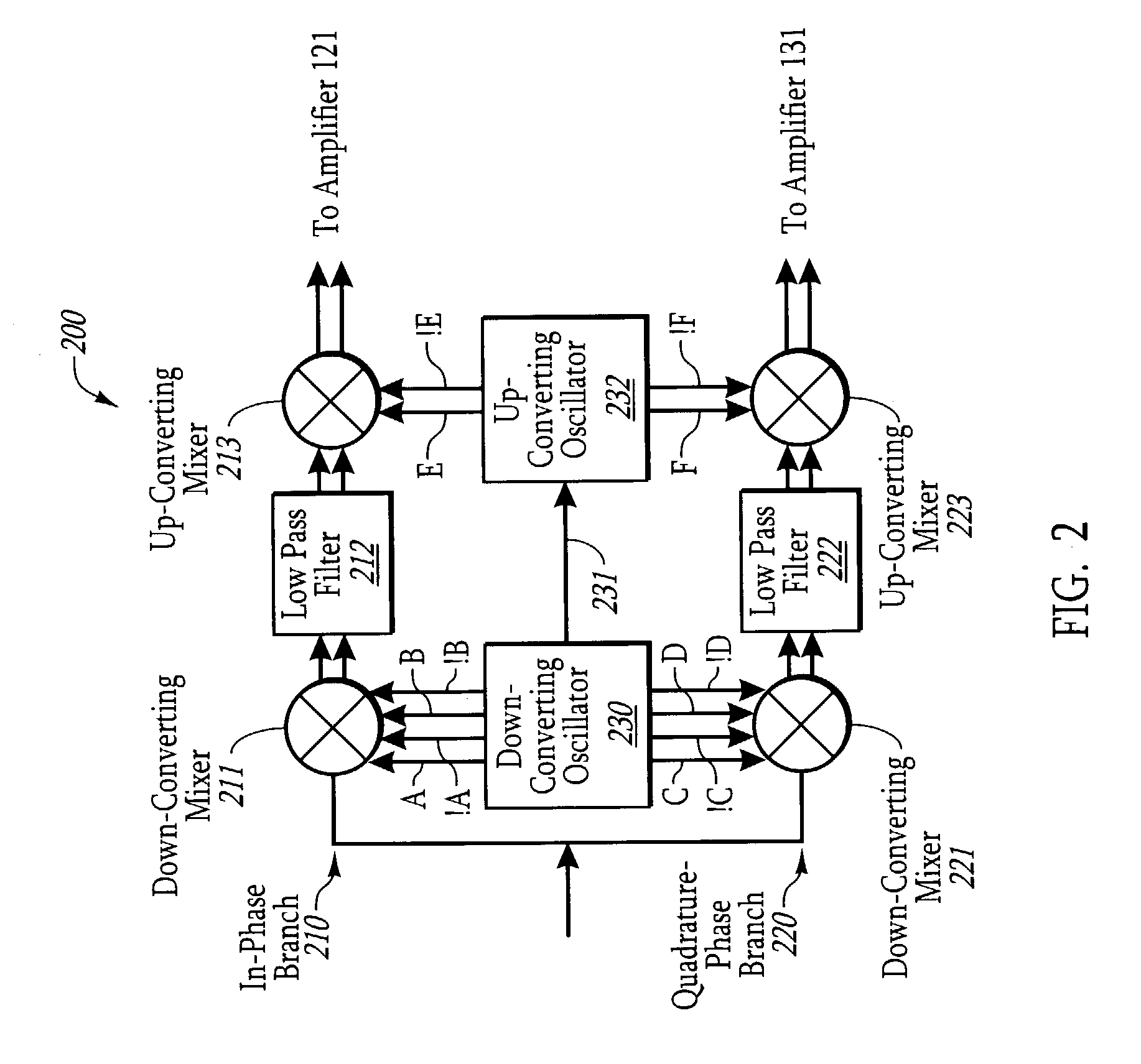Direct conversion receiver for amplitude modulated signals using linear/log filtering
a technology of amplitude modulation and direct conversion, applied in the direction of amplitude demodulation, transmission noise suppression, electrical apparatus, etc., can solve the problems of greater chance of irreversible data loss and signal decay, and achieve the effect of convenient use of log amplifiers, low power consumption, and high dynamic rang
- Summary
- Abstract
- Description
- Claims
- Application Information
AI Technical Summary
Benefits of technology
Problems solved by technology
Method used
Image
Examples
Embodiment Construction
[0030]The principles of the present invention are directed towards a receiver that detects an amplitude of a baseband signal in a manner that preserves dynamic range and power. The receiver circuit includes a direct conversion receiver that receives a modulated signal, and generates an in-phase differential signal and a quadrature-phase differential signal. The receiver includes an in-phase branch that processes the in-phase differential signal, and a quadrature-phase branch that processes the quadrature-phase differential signal. Each branch includes an amplifier and a shared summer. The amplifier is configured to receive and amplify the respective in-phase or quadrature-phase differential signal. The summer receives the resulting amplified differential signal and sums the signals to generate a single signal. A bandpass filter receives the summed signals and filters out of band components. A log amplifier receives the filtered and summed in-phase and quadrature-phase signals, and g...
PUM
 Login to View More
Login to View More Abstract
Description
Claims
Application Information
 Login to View More
Login to View More - R&D
- Intellectual Property
- Life Sciences
- Materials
- Tech Scout
- Unparalleled Data Quality
- Higher Quality Content
- 60% Fewer Hallucinations
Browse by: Latest US Patents, China's latest patents, Technical Efficacy Thesaurus, Application Domain, Technology Topic, Popular Technical Reports.
© 2025 PatSnap. All rights reserved.Legal|Privacy policy|Modern Slavery Act Transparency Statement|Sitemap|About US| Contact US: help@patsnap.com



